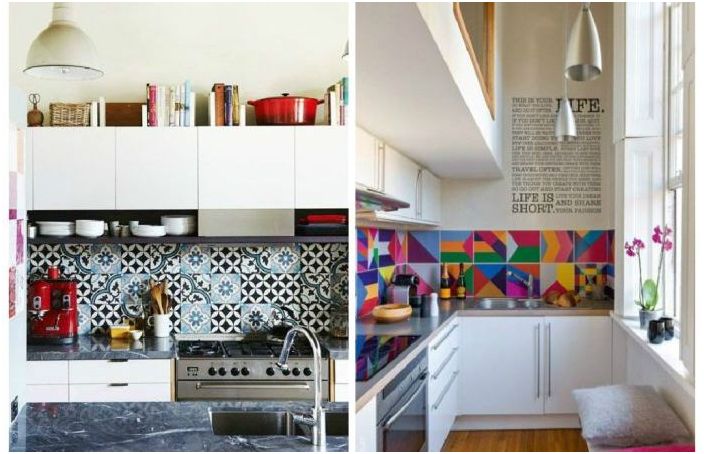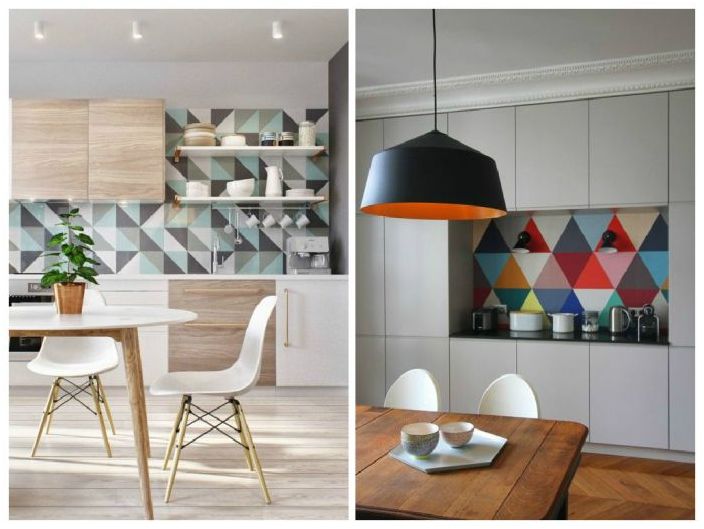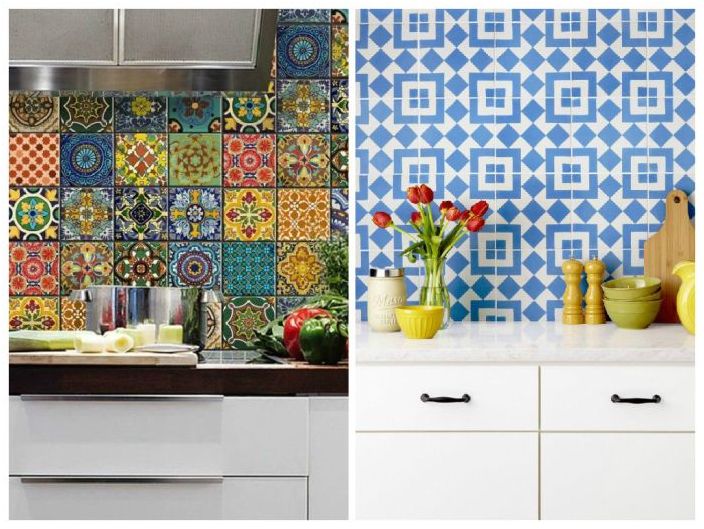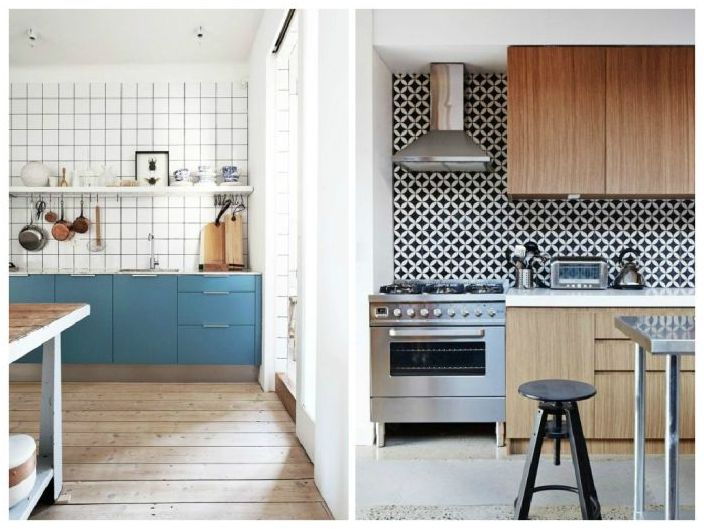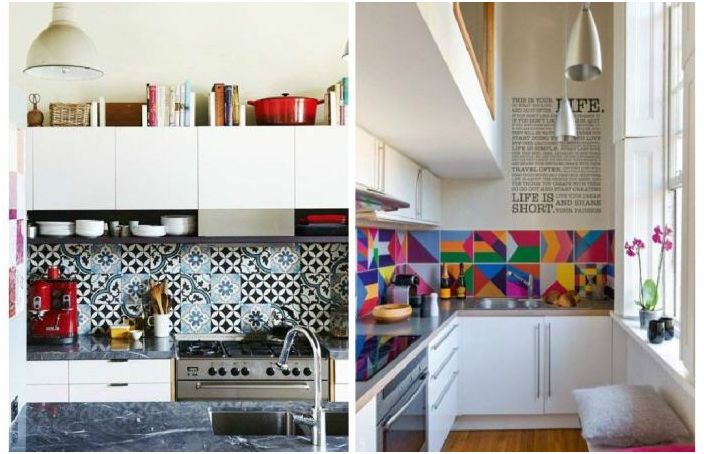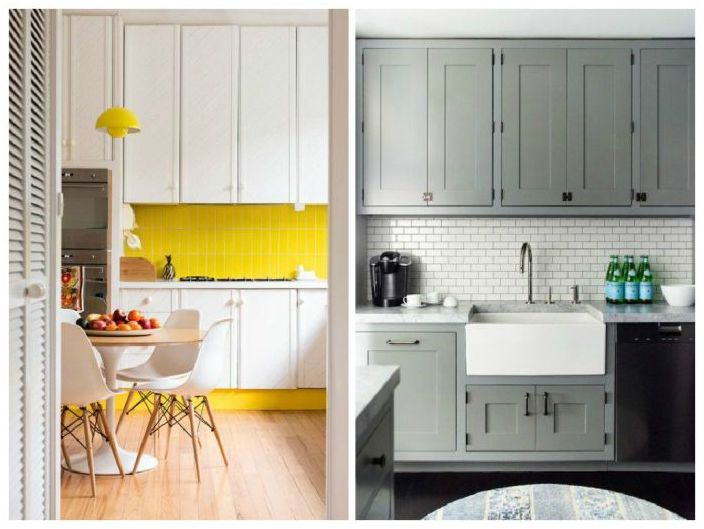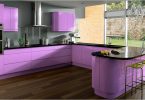Unusual design of kitchen aprons
One of the most practical and popular materials used for cladding a kitchen apron is ceramic tiles. There are some subtleties that you need to know before buying and installing it on one of the kitchen walls. How to choose and maintain a tile for a kitchen backsplash? Which design should you choose? We have prepared an overview of the most important points.
Dimensions of the kitchen apron
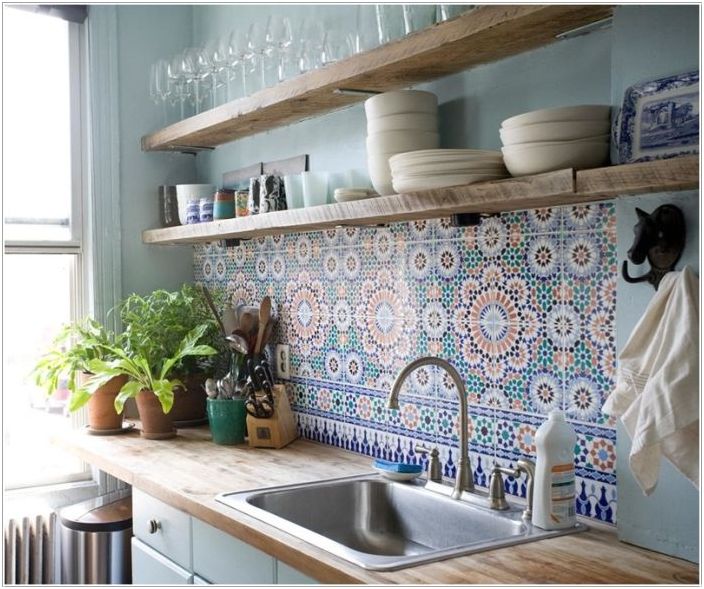
Beautiful kitchen apron
Before going to the hypermarket for tiles, you need to think about where and how the apron will be located. There are several options, for example a hob or a sink. Sometimes it can occupy the entire working area from the stove to the sink. Its width and height will directly depend on the location of the furniture and its size. The main thing is that its edges coincide with the height of the work surface and the bottom of the wall cabinets..
Standard values:
• Width – about 120-150 centimeters.
• Height – 55-65 centimeters from the work surface to wall cabinets.
• Distance from the floor – about 84-85 centimeters.
Minimalist kitchens
Which tile to choose for a kitchen apron?
Geometric patterns set dynamics
When choosing a tile, you should pay attention to its thickness. It should not be thinner than 3-4 millimeters. The packaging should be marked that this is not a floor tile, but a cover for a kitchen apron. You also need to look for the AA mark, which indicates that the tile is resistant to the use of detergents..
As for the size, most designers opt for 10×10 cm tiles. They look very neat and attractive. This size allows you to experiment with color combinations. There are also a number of other sizes – 20×20, 60×60, 60×120. It all depends on the area of the kitchen and the preferences of its owners..
Kitchen apron design options
In a small kitchen, in order to visually enlarge the room, it is advisable to use small tiles or lay out a mosaic apron. In spacious kitchens, you can experiment with large squares..
Rectangular tiles are rarely used to create a backsplash and are considered more difficult to install. But she is able to visually expand the space, and if you lay it out «herringbone», it will make the interior more dynamic.
Using the size and pattern of the tiles, you can visually change the space
The subtleties of styling
Tiling is considered to be a time consuming process that requires special care and good surface preparation. The wall must be well leveled before this. It is better to fix the tiles with special glue, which can be bought at a hardware store. All materials should be a little more than necessary.
Experts recommend using a grout that has antifungal, anti-mold and moisture resistant properties. After complete installation, it is advisable to cover the seams with a special protective varnish. This will simplify the process of maintaining the apron in the future and prevent its destruction..
You can experiment with the shape and color of the apron.
How to care for a tile backsplash?
It is believed that maintaining a tile backsplash is not difficult. It is necessary to wipe the surface of the food immediately after cooking with a soft sponge dipped in soapy water. If you allow the drying of oily stains, then it will be more difficult to clean them later..
Embossed tiles and mosaics are more difficult to maintain. A smooth glossy or matte surface is considered ideal for cleaning. Both options must be wiped in such a way that no soap marks and streaks remain on them. After wet cleaning, it is recommended to wipe the surface of the apron with a dry soft towel.
A kitchen apron can be neutral or accent color
There are several more interesting materials from which you can make a kitchen apron. We’ve covered the pros and cons of each.

